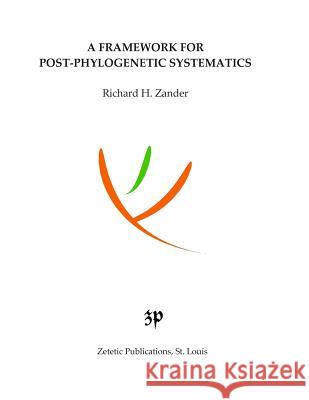A Framework for Post-Phylogenetic Systematics » książka
A Framework for Post-Phylogenetic Systematics
ISBN-13: 9781492220404 / Angielski / Miękka / 2013 / 214 str.
The Framework for Post-Phylogenetic Systematics reframes biological systematics to reconcile classical and cladistic schools. It combines scientific intuition and statistical inference in a new form of total evidence analysis developing a joint macroevolutionary process-based causal theory. Discrepancies between classical results and morphological and molecular cladograms are explained through heterophyletic inference of deep ancestral taxa, coarse priors leading to Bayesian Solution of total evidence, self-nesting ladders that can reverse branching order, and a superoptimization protocol that aids in distinguishing pseudoextinction from budding evolution. It determines direction of transformative evolution through Dollo evaluation at the taxon level. The genus as a basic, practical unit of evolution is postulated for taxa with dissilient evolution. Scientific intuition is defended as highly developed heuristics based on physical principles. The geometric mean and Fibonacci series in powers of the golden ratio explain distributions of measurements of the form (a-)b-c(-d) when close to zero. This series is basic both to S. J. Gould's speciational reformulation of macroevolution and to psychologically salient numbers. The effect of molecular systematics on conservation and biodiversity research is shown to be of immediate concern. The value of cladistic study for serial macroevolutionary reconstruction is reduced to-in morphological studies, evaluation of relatively primitive or advanced taxa, and distinction of taxa by autapomorphies, and-in molecular studies, identification of deep ancestors via heterophyly or unreasonable patristic distance not explainable by extinct or unsampled extended paraphyly. Evolutionary paraphyly is common in cladistics and is to be avoided; phylogenetic paraphyly, however, can be informative.












